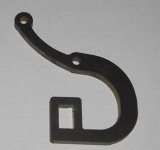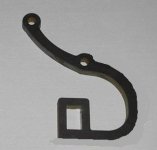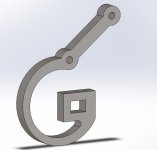adrian_sm said:
BTW I saw a post on another thread that had an internal spring arrangement like the clutch concept I posted above.
They use it to senses torque, so won't help with your purpose. But thought it interesting anyway.
Wow that thing looks like it would definately serve my purpose... Those springs must compress under torque for the sensor to work right...? what motor is that?
mat h physics said:
The problem you are trying to address is gear misalignment due to shaft flex. Floating the axle will only make this worse..
The axle will only be floating in a rotational sense... the axle nuts will still be as tight or tighter than normal and there will be lots of washers/spacers to stiffen the system otherwise.
When landing from a jump the loading of the gears can't help, in addition to axle flex. Also, upon landing, axle flex would be exaccerbated by torque from the motor... have people broken gears doing jumps with the motor off? (no motor torque)
MadRhino said:
You could use the brake cut off circuit.
I was thinking of using a normally on micro-switch in series with the throttle signal wire. So the throttle cuts out when the suspension fully extends. I could do that in addition to the torque spring.
John in CR said:
The motor has a clutch mechanism. Change it for a slipper clutch.
That a nice idea but I don't know the a thing about slipper clutches, or how I would find one that fit on a MAC.
Heres a new design. I could use two TAs, one each side, or make it thicker. Not sure what material to use, I was going to use some sort of Stainless steel, but maybe if I can find some I'll use some type of
spring steel
In Solidworks I managed to do some stress analysis, not in an ideal way though. I couldn't figure out how to simulate torque. Also I don't know how to give it a fixed position allowing only rotation(for the part the motor axle goes in).






